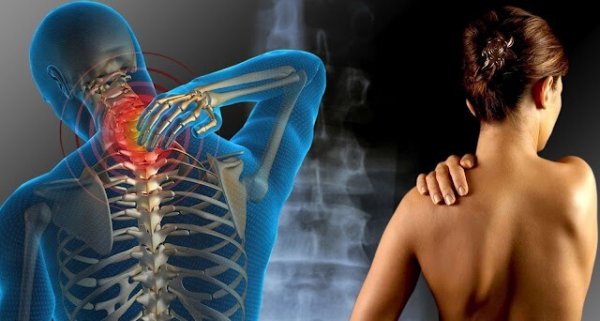Fibromyalgia: A Sufferer's Account


Written and verified by the psychologist Fátima Servián Franco
When recently speaking to a sufferer of fibromyalgia, I came to the conclusion that there was a need to address this disease on a psychological level. I wanted to find out what questions sufferers were usually asked and what the first months of living with the disease is like.
Therefore, in this article, people with fibromyalgia are given a voice to speak about their disease. They answer certain questions with the intention of helping others to put their lives back together after the diagnosis.
Recognition by the WHO
In 1992, fibromyalgia was recognized by the WHO as a new clinical entity, called fibromyalgia syndrome, (FMS) which was incorporated into the international classification of diseases.
The WHO defines the clinical entity as: “that alteration or interruption of the structure or function of a part of the body, with characteristic symptoms and signs and whose etiology, pathogenesis and prognosis may or may not be known ” (López Espino & Mingote Adán, 2008 ).
The conditions that occur in fibromyalgia present symptoms and signs typical of a multifactorial etiopathogenesis in which genetic and epigenetic factors are combined. This conditions a persistent alteration of the self-regulation system and control of pain and stress in the central nervous system (López Espino & Mingote Adán, 2008).
In its treatment, a multidisciplinary approach is essential as opposed to a traditional biomedical approach, given the enormous complexity that these patients usually present (Villanueva et al, 2004).
“For me, support goes beyond someone holding my bags so that I don’t have to carry any weight, it’s helping me cope with the disease, understanding me, and not just agreeing with me. It’s being by my side and adapting together to the new situation.”
-Person with fibromyalgia-

First-person testimony: fibromyalgia
The first symptoms
I always feel tired, sleepy, and cold. The stomachaches and headaches are already a part of me. I constantly have intense pain in my knees and muscles as well as shooting pains and cramps.
Pain and aggravation of the symptoms
I can’t stand it. I don’t want to live like this. Every day is the same as the last one. It just doesn’t seem worth it… spending another 24 hours hating my body because it hurts in such an unbearable and insufferable way.
It doesn’t matter that I haven’t moved all day or made any extra effort. Just the act of getting my body out of bed is tiring because it’s stiff and it hurts. I drop everything, it’s all too heavy for me, everything tires me out… cutting things, holding dishes, drying my hair… not to mention driving and working.
It doesn’t matter if I’m sleeping, standing, or sitting. The sofa isn’t comfortable, and neither is the bed. All my clothes are uncomfortable. Everything is just so difficult. Because I’m in pain, I can’t be with people. It doesn’t matter if it’s for a short or a long time. I have to work out everything in advance… how many people I’m going to have to interact with, and where and how I’m going to be. This means I’ve had to put a stop to the social life that I enjoyed so much.
Communication problems
I don’t want to talk to anyone about it either as no one understands. All the tests I had to see if it was an autoimmune disease were negative. Also, speaking usually means complaining and I know I’m not the only person with problems.
I can’t find the words to communicate. Suddenly, I just can’t find the words. My mind goes blank. It’s really difficult to make a comment, intervene in a conversation, or give an opinion. Oversights become more constant and have greater consequences. They completely take me over.
The symptoms have worsened. There are no longer any good days when I have some energy. It seems that these sensations will never go away, the stiffness and the flulike feelings. I find myself hoping that it’ll only be temporary, but it never stops.
I can’t bear anyone touching me. I’ve become hypersensitive to light, noise, and people’s comments. It’s extreme. I can’t fall asleep because it hurts, no matter how tired I feel. The pain wakes me up at night. Sleep isn’t restful. Medicine doesn’t do anything. It seems the illness has reached its peak.
“I consider myself lucky because I’m listened to every day. I have people around me who understand me perfectly and who support me. Some, even though they don’t understand the disease particularly well, accept and care for me.”
-Person with fibromyalgia-

Diagnosis, fight, and acceptance of fibromyalgia
I visit the pain unit in the hope that they’ll prescribe me a magic pill or send me to physiotherapy sessions for life. My symptoms suggest I have fibromyalgia and I undergo a repertoire of tests to find out if this is the case. It’s a disease that they still don’t really understand and for which there’s no cure.
The internal medicine doctor confirms the diagnosis. This time, the immunity test shows the antibodies. I’m facing a diagnosis of chronic disease. They’re harsh words to hear.
I go to a physical therapist who advises me to treat myself at various levels since this disease affects different areas of the body. He encourages me to find out more about the illness. He asks me what’s influenced how I’ve faced my diagnosis. Within a few weeks, I understand that the change has to start with me.
Treatments must be personalized and tailored to each person for them to work. First, I have to change, modify, or eradicate certain small actions or gestures that I carry out on a day-to-day basis. It means not looking at the complete puzzle, but going piece by piece, repositioning it, and not being impatient.
As for the tasks, I have to prioritize and leave certain things to one side. I have to learn to prevent and anticipate without getting overwhelmed. I must avoid tension at all costs, which is really difficult.
In the personal-social sphere, I have to work on my emotional intelligence. My feelings of sadness, joy, fear, anguish. Stopping being afraid has become a challenge as well as a fight against the disease.
In addition to my mind, I have to balance my body. For example, I have to know what I can and can’t eat. To recognize what foods might give me indigestion or chronic diarrhea.

Exercising
I have to do physical exercise. However, this doesn’t really seem to fit in with the kind of pain and disability that I’m going through. Going to a gym, a group class, and practicing sport seems like climbing Everest to me. Nevertheless, I know that the hardest part is always the first step, and I have to persevere even though it’ll mean enduring pain at the beginning.
In my particular case, qigong or chi kung is helping me a lot. These are a variety of techniques related to traditional Chinese medicine, which include the mind, breathing, and physical exercise. It’s helped me reconcile with my body. I was beginning to hate it as it only offered me pain.
Managing to stand up to the disease means that daily activities become a little easier. Now, I can go anywhere, even if I’m feeling uncomfortable, and talk to people without being afraid that everything I say will turn into a complaint. Gradually, I’m recovering my body again.
“A chronic disease like fibromyalgia, like chronic pain, shakes the patient’s world, and that of their environment; that’s why we mustn’t forget about mutual support.”
-Person with fibromyalgia-
All cited sources were thoroughly reviewed by our team to ensure their quality, reliability, currency, and validity. The bibliography of this article was considered reliable and of academic or scientific accuracy.
- López, M. y Mingote, J. C. (2008). Fibromialgia. Clínica y Salud, 19(3), 343-358. https://scielo.isciii.es/scielo.php?pid=S1130-52742008000300005&script=sci_abstract#:~:text=La%20OMS%20define%20la%20entidad,pueden%20ser%20conocidos%20o%20no%22.
- Siracusa, R., Paola, R. D., Cuzzocrea, S., & Impellizzeri, D. (2021). Fibromyalgia: Pathogenesis, Mechanisms, Diagnosis and Treatment Options Update. International journal of molecular sciences, 22(8), 3891. https://www.ncbi.nlm.nih.gov/pmc/articles/PMC8068842/
- Sociedad Española de Reumatología. (2001). Estudio EPISER: Prevalencia e impacto de las enfermedades reumáticas en la población adulta española. https://www.ser.es/episer/
- Villanueva, V., Valía, J., Cerdá, G., Monsalve, V., Bayona, M. J. y Andrés, J. (2004). Fibromialgia: diagnóstico y tratamiento. El estado de la cuestión. Revista de la Sociedad Española del Dolor, 11(7), 50-63. https://scielo.isciii.es/scielo.php?script=sci_arttext&pid=s1134-80462004000700005
This text is provided for informational purposes only and does not replace consultation with a professional. If in doubt, consult your specialist.








